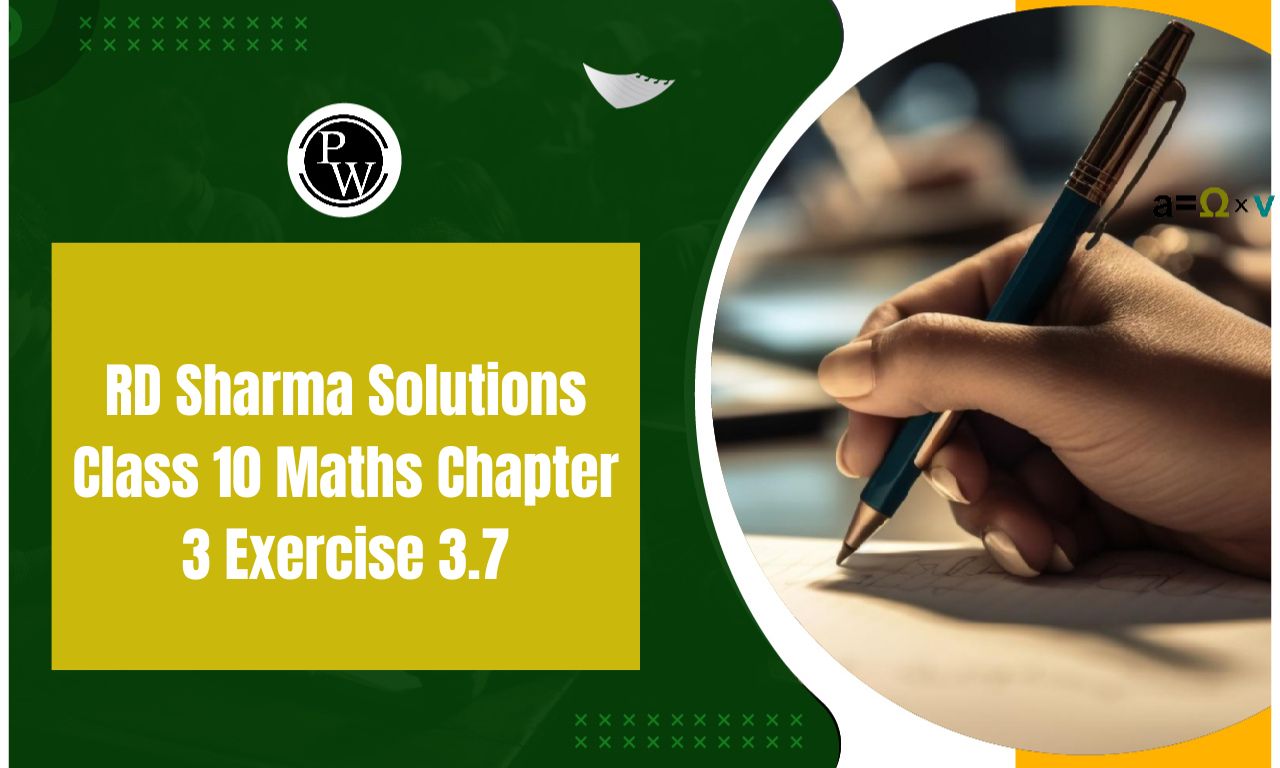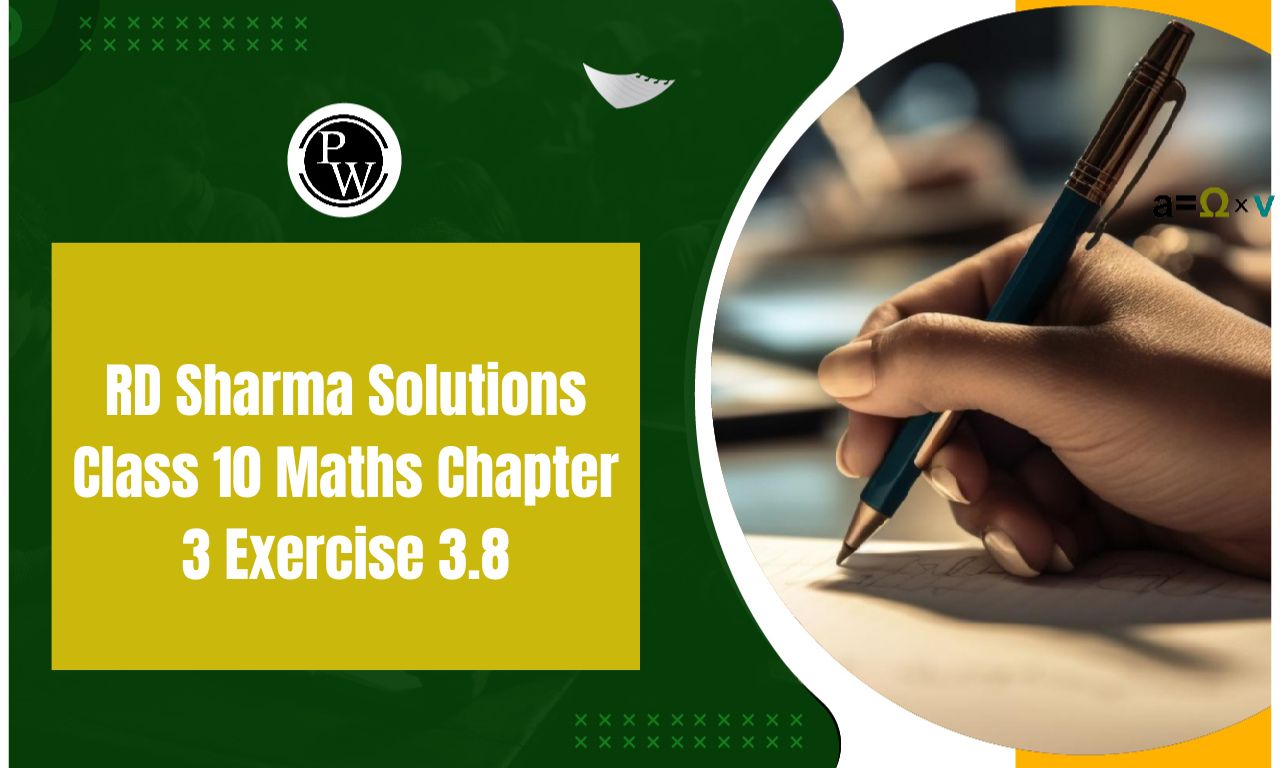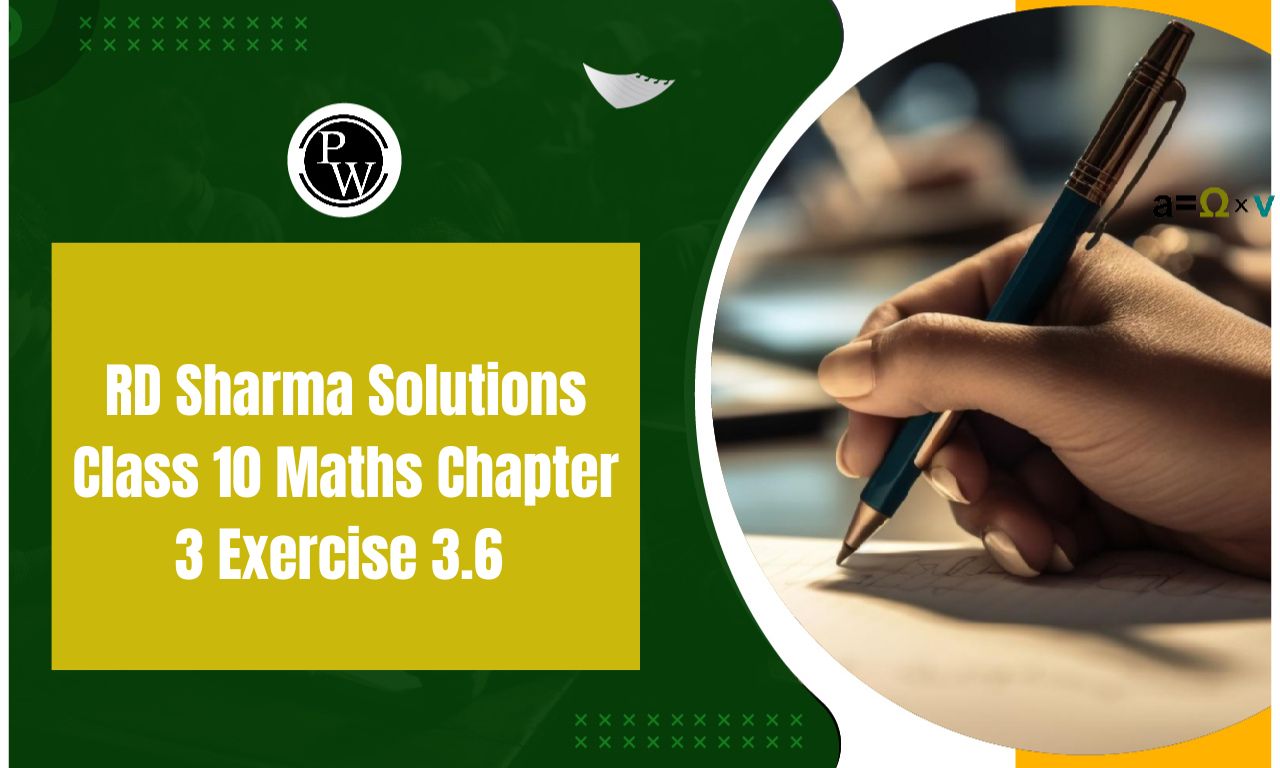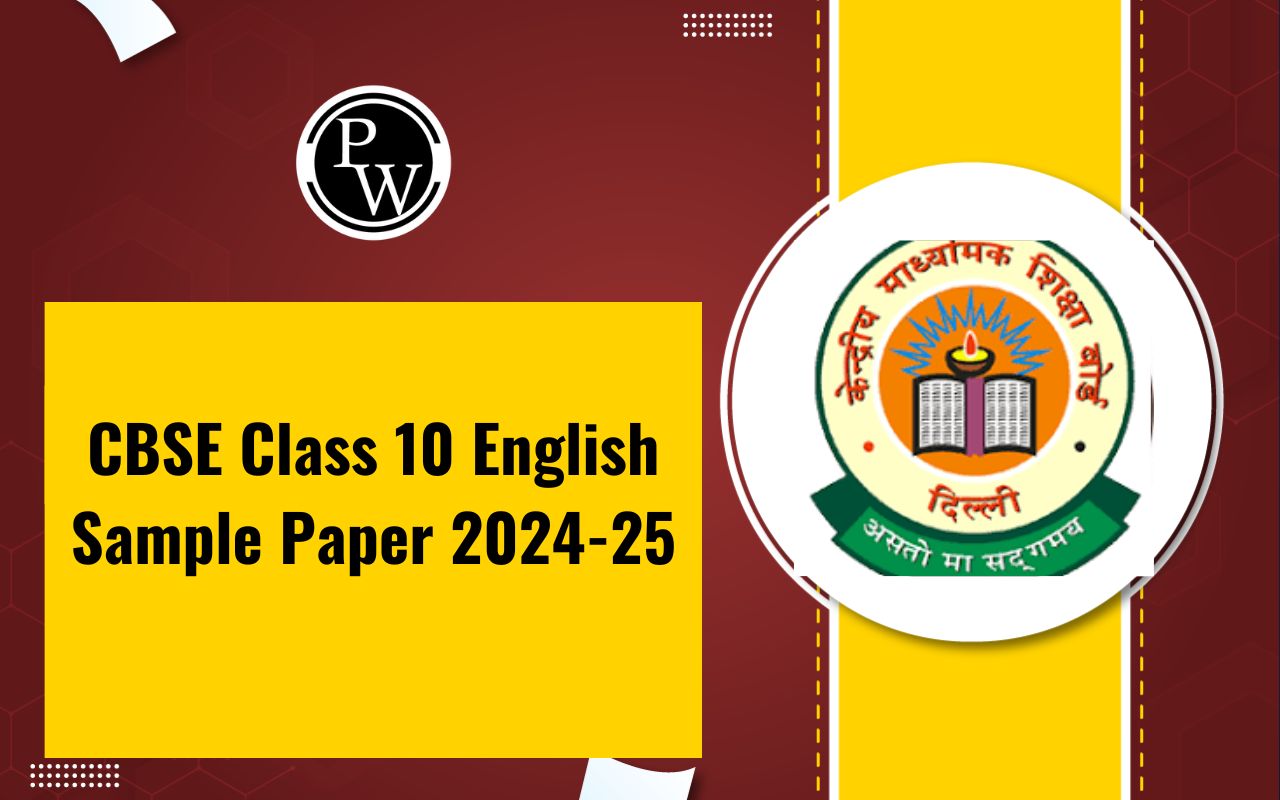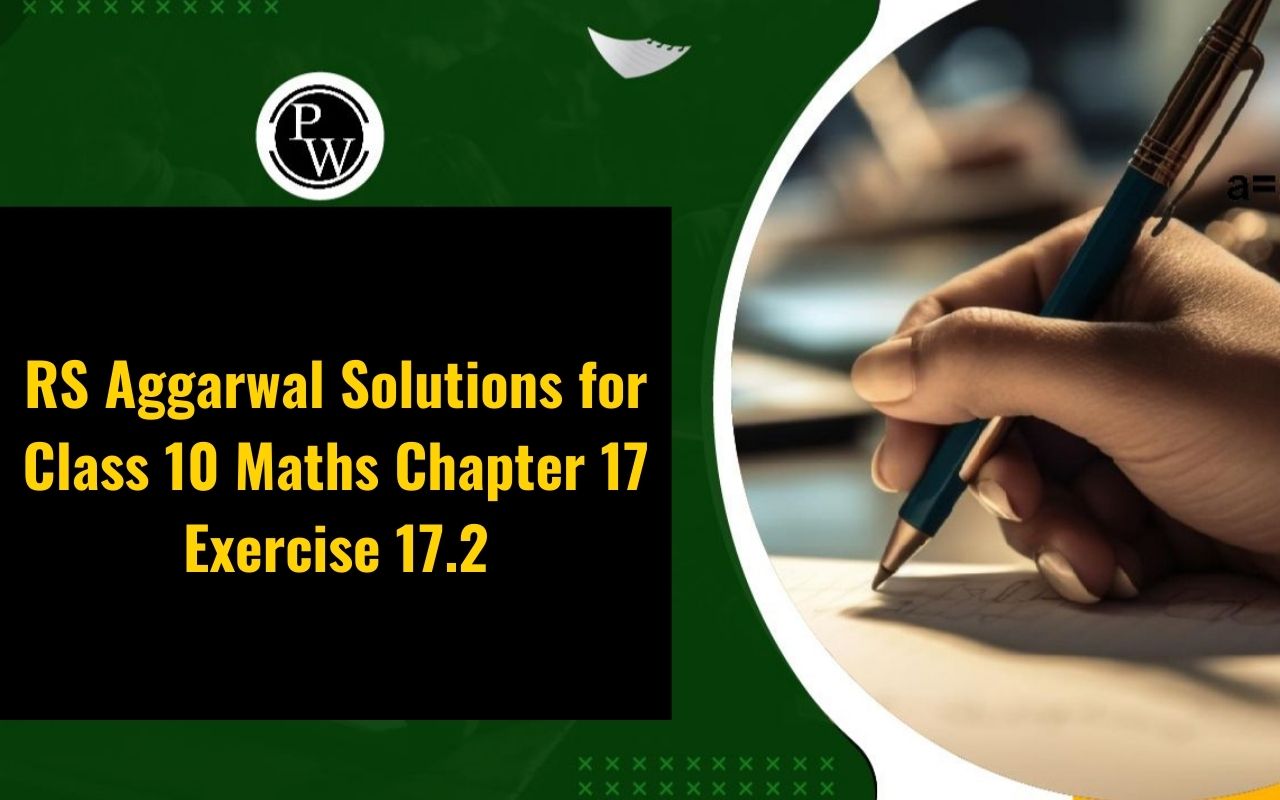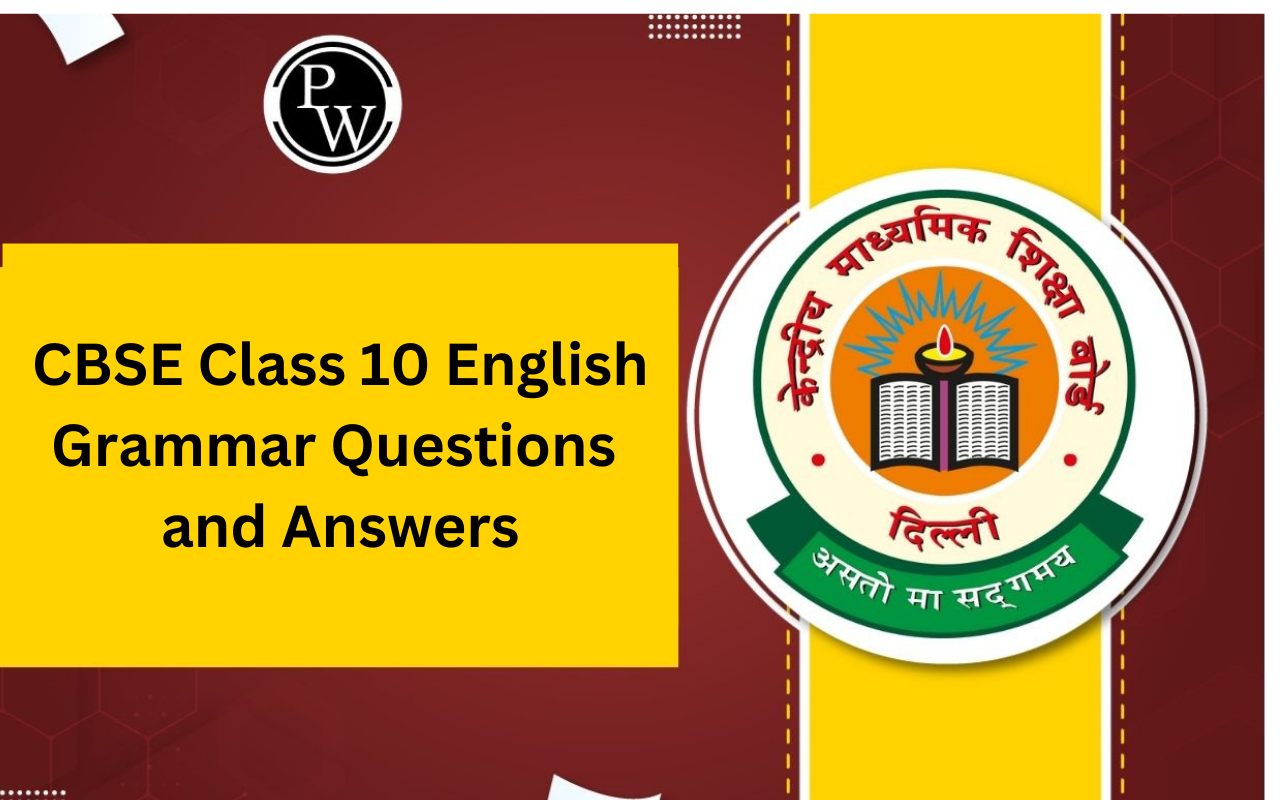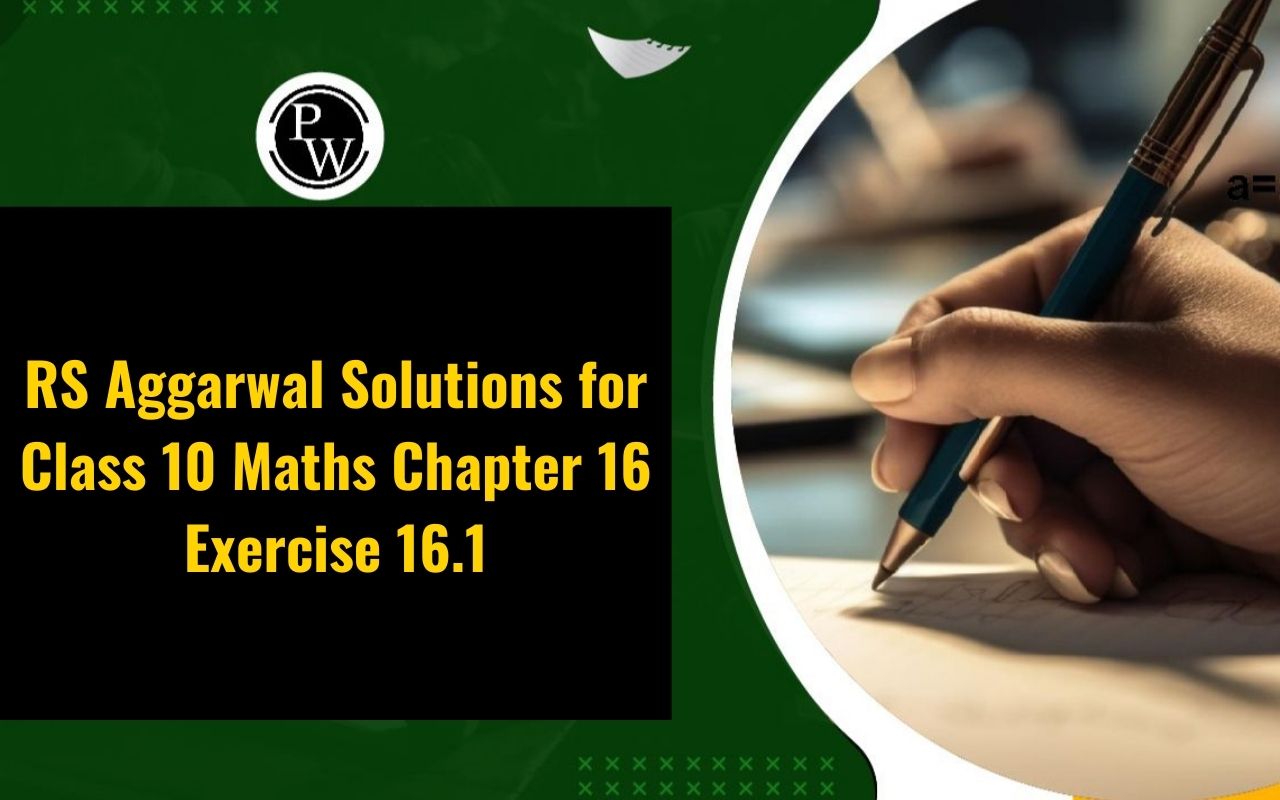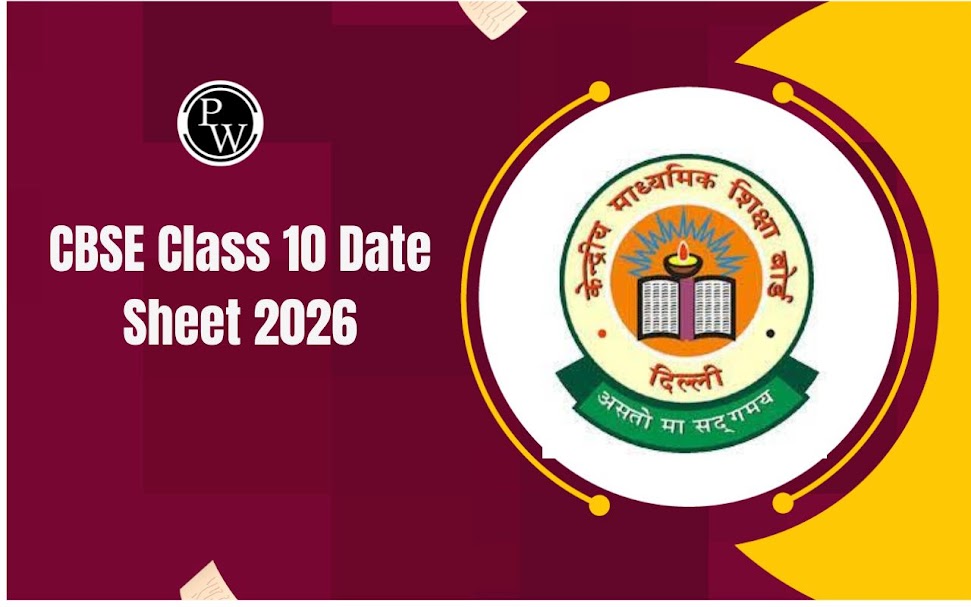
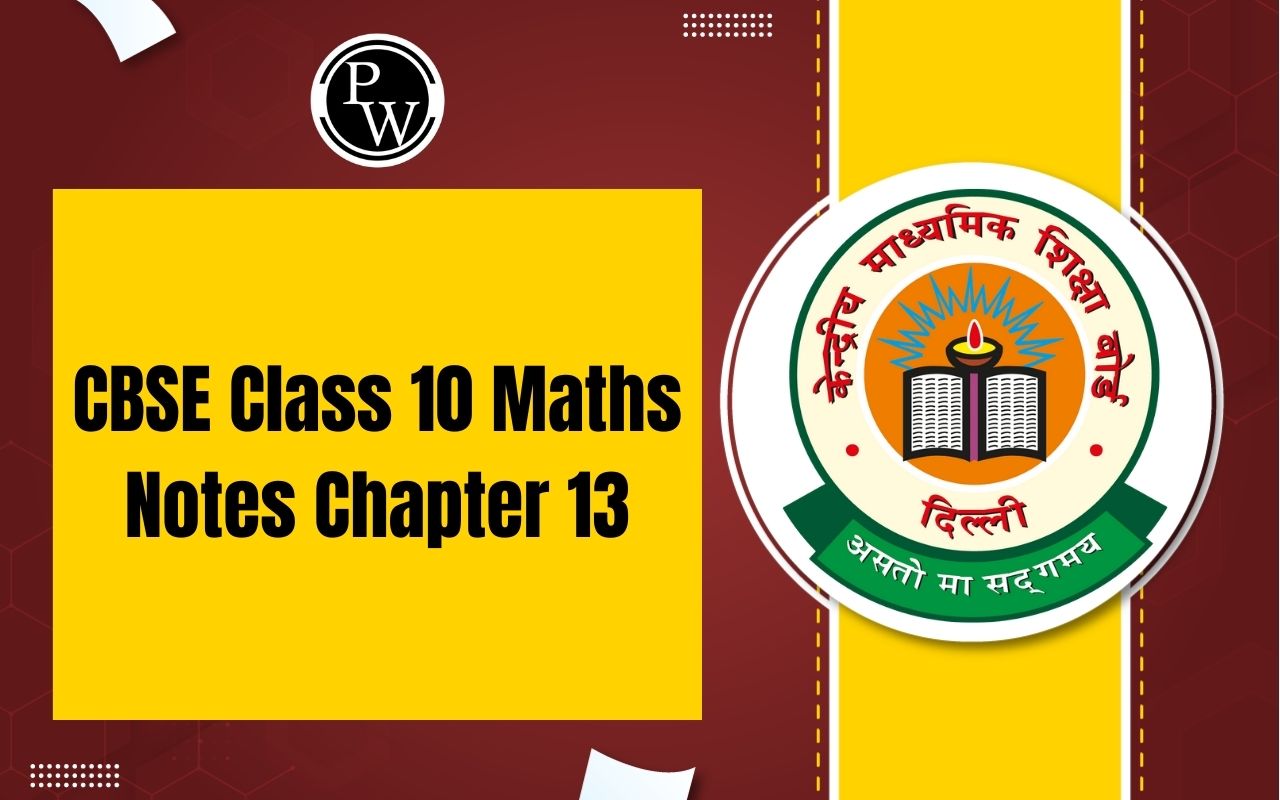
CBSE Class 10 Maths Notes Chapter 13 PDF
You'll discover an appropriate explanation of the topic in more understandable language, making it easier for you to connect with them while responding to the questions. If you have an exam coming up, these revision notes are perfect for you to study from. Make sure you prepare the chapter appropriately by consulting these notes.CBSE Class 10 Maths Notes Chapter 13 PDF
CBSE Class 10 Maths Notes Chapter 13
Surface Area and Volume of Cuboid
A cuboid is a shape that has six rectangular faces covering it. The total area of a cuboid's six rectangular sides equals its surface area.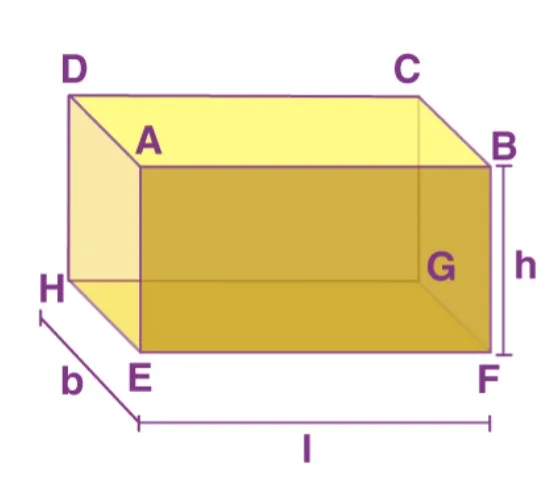 The total surface area of the cuboid (TSA) = Sum of the areas of all its six faces
TSA (cuboid) =
2
(
l
×
b
)
+
2
(
b
×
h
)
+
2
(
l
×
h
)
=
2
(
l
b
+
b
h
+
l
h
)
Lateral surface area (LSA) is the area of all the sides apart from the top and bottom faces.
The lateral surface area of the cuboid = Area of face AEHD + Area of face BFGC + Area of face ABFE + Area of face DHGC
LSA (cuboid) =
2
(
b
×
h
)
+
2
(
l
×
h
)
=
2
h
(
l
+
b
)
Length of diagonal of a cuboid =√(l
2
+ b
2
+ h
2
)
The total surface area of the cuboid (TSA) = Sum of the areas of all its six faces
TSA (cuboid) =
2
(
l
×
b
)
+
2
(
b
×
h
)
+
2
(
l
×
h
)
=
2
(
l
b
+
b
h
+
l
h
)
Lateral surface area (LSA) is the area of all the sides apart from the top and bottom faces.
The lateral surface area of the cuboid = Area of face AEHD + Area of face BFGC + Area of face ABFE + Area of face DHGC
LSA (cuboid) =
2
(
b
×
h
)
+
2
(
l
×
h
)
=
2
h
(
l
+
b
)
Length of diagonal of a cuboid =√(l
2
+ b
2
+ h
2
)
Volume of a Cuboid
The area that is occupied by a cuboid's six rectangular faces is its volume. Volume of a cuboid = ( b a s e a r e a ) × h e i g h t = ( l b ) h = l b hCBSE Class 10 Syllabus 2024-25
Surface Area and Volume of Cube
Three-dimensional solids with six square faces, twelve edges, and eight vertices are called cubes.Surface Area of Cube
As we know, one of the important properties of a cube is length = breadth = height. If we assume that the length of the cube is “l”, and hence we get l = breadth = height So, obviously, here we get, Breadth = l Height = lVolume of a Cube
Volume of a cube = b a s e a r e a × h e i g h t Since all dimensions of a cube are identical, volume = l 3 Where l is the length of the edge of the cube.Surface Area and Volume of Cylinder
A cylinder is a solid form consisting of two circular bases joined by a lateral surface. A cylinder thus has three faces: one lateral, one round, and one circular. We can calculate a cylinder's volume and surface area using these measurements.Surface Area of Cylinder
Consider a cylinder with height h and base radius r in units. When the curved surface of this cylinder is opened along the circular base's diameter (d = 2r), it can be turned into a rectangle with dimensions of h units for height and 2πr for length. Consequently,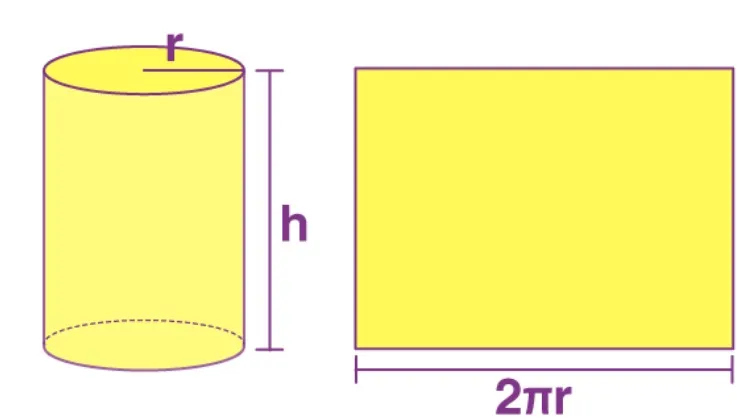
Surface Area and Volume of Right Circular Cone
A cone is a three-dimensional geometry with a single circular base that gently narrows to a point known as the vertex.Surface Area of Cone
Consider a right circular cone with slant length l , radius r and height h .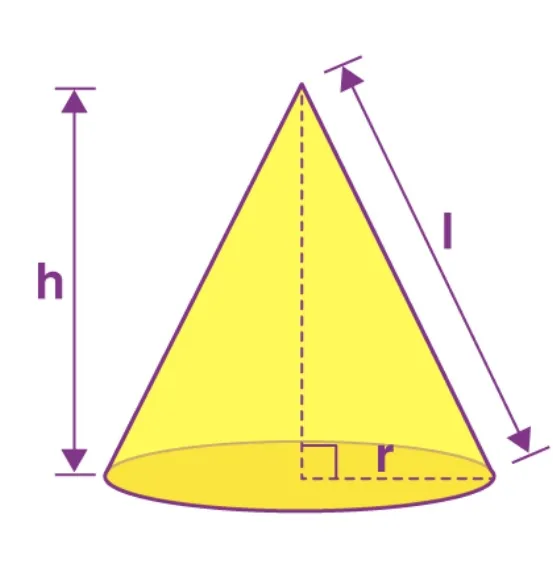

Volume of a Right Circular Cone
A right circular cone has a volume that is one-third that of a cylinder with the same height and base. Put another way, a cylinder with the same height and base is formed by three cones.
Surface Area and Volume of Sphere
A solid with a circular form and points on its surface that are equally spaced from the centre is called a sphere.

Surface Area and Volume of Hemisphere
A hemisphere is a form with one flat surface that makes up half of a sphere. The hemisphere's other side resembles a circular bowl. Take a look at the following figure.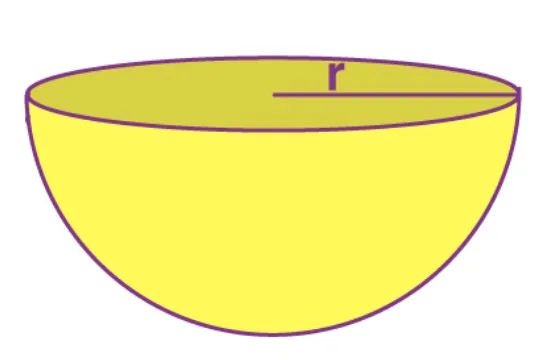


Surface Areas and Volumes Formulas
A quick review of several solid forms together with their corresponding surface area and volume calculations is shown in the following table:| Shape | Parameters | Surface Area (Square units) | Volume (Cubic units) |
| Cuboid | Length = l Breadth = b Height = h | TSA = 2(lb + bh + lh) LSA = 2h(l + b) | V = l × b × h |
| Cube | Length = Breadth = Height = l | TSA = 6l 2 LSA = 4l 2 | V = l 3 |
| Cylinder | Radius = r Height = h | CSA = 2π × r × h TSA = 2πr(h + r) | V = πr 2 h |
| Cone | Radius = r Height = h Slant Height = l | CSA = πrl TSA = πr(l + r) | V = (1/3)πr 2 h |
| Sphere | Radius = r | CSA = TSA = 4πr 2 | V = (4/3)πr 3 |
| Hemisphere | Radius = r | CSA = 2πr 2 TSA = 3πr 2 | V = (2/3)πr 3 |
| Frustum | Radius of top circular part = r 1 Radius of bottom circular part = r 2 Height = h Slant height = l | CSA = π(r 1 +r 2 )l TSA = π(r 1 + r 2 )l + π(r 12 + r 22 ) | V = (1/3)πh(r 12 + r 22 + r 1 r 2 ) |
Benefits of CBSE Class 10 Maths Notes Chapter 13
- To compile these notes, subject matter specialists review a variety of reference materials.
- Our revision notes are incredibly helpful and accessible from any location at any time.
- Notes on Surface Areas and Volumes in Maths Class 10 Anyone can use PDF for free, at any time, and from any location.
- There is an offline version of the Class 10 Maths Chapter 13 Revision Notes PDF.
CBSE Class 10 Maths Notes Chapter 13 FAQs
How to avoid mistakes in surface area and volume class 10?
Before doing calculations, always make the units of all dimensions uniform so as to avoid committing mistakes.
Which is the easiest chapter in Maths class 10?
Easiest chapters in Class 10 Maths include Introduction to Trigonometry, Arithmetic Progressions, Real Numbers, Polynomials, and Probability due to their straightforward concepts and practical applications.
How can I score 100% in class 10?
Focus on Exercising NCERT Books.
🔥 Trending Blogs
Talk to a counsellorHave doubts? Our support team will be happy to assist you!

Check out these Related Articles
Free Learning Resources
PW Books
Notes (Class 10-12)
PW Study Materials
Notes (Class 6-9)
Ncert Solutions
Govt Exams
Class 6th to 12th Online Courses
Govt Job Exams Courses
UPSC Coaching
Defence Exam Coaching
Gate Exam Coaching
Other Exams
Know about Physics Wallah
Physics Wallah is an Indian edtech platform that provides accessible & comprehensive learning experiences to students from Class 6th to postgraduate level. We also provide extensive NCERT solutions, sample paper, NEET, JEE Mains, BITSAT previous year papers & more such resources to students. Physics Wallah also caters to over 3.5 million registered students and over 78 lakh+ Youtube subscribers with 4.8 rating on its app.
We Stand Out because
We provide students with intensive courses with India’s qualified & experienced faculties & mentors. PW strives to make the learning experience comprehensive and accessible for students of all sections of society. We believe in empowering every single student who couldn't dream of a good career in engineering and medical field earlier.
Our Key Focus Areas
Physics Wallah's main focus is to make the learning experience as economical as possible for all students. With our affordable courses like Lakshya, Udaan and Arjuna and many others, we have been able to provide a platform for lakhs of aspirants. From providing Chemistry, Maths, Physics formula to giving e-books of eminent authors like RD Sharma, RS Aggarwal and Lakhmir Singh, PW focuses on every single student's need for preparation.
What Makes Us Different
Physics Wallah strives to develop a comprehensive pedagogical structure for students, where they get a state-of-the-art learning experience with study material and resources. Apart from catering students preparing for JEE Mains and NEET, PW also provides study material for each state board like Uttar Pradesh, Bihar, and others
Copyright © 2025 Physicswallah Limited All rights reserved.
